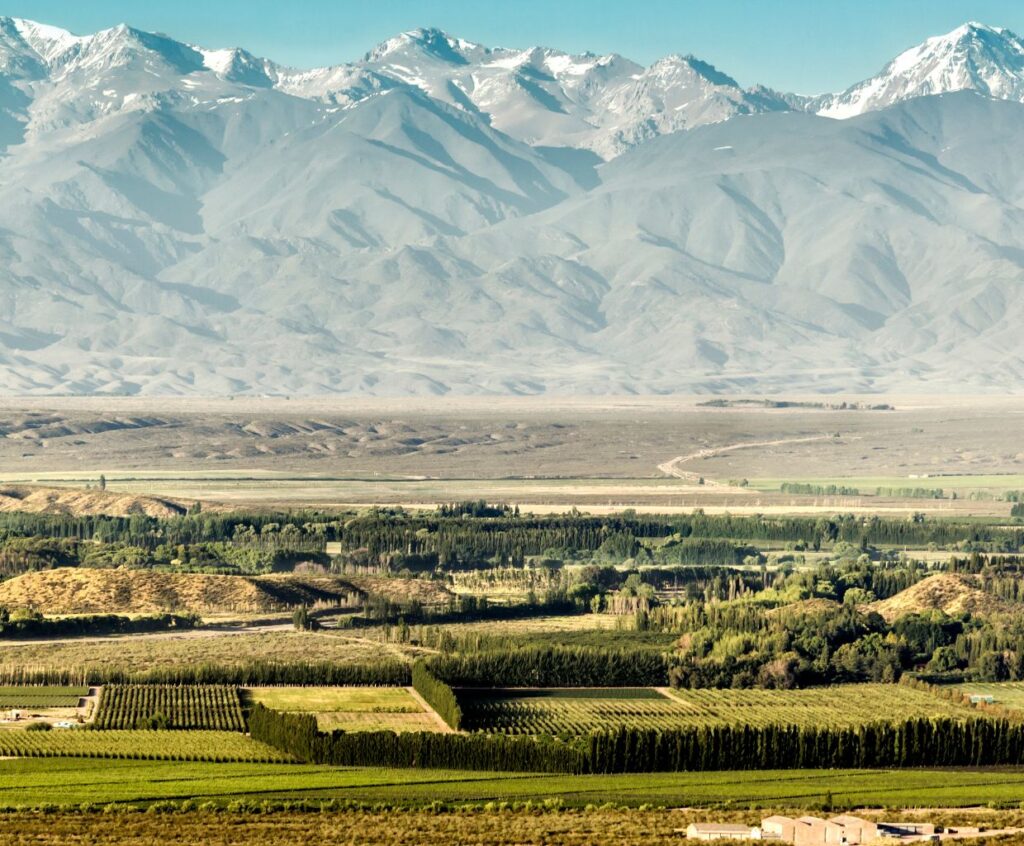Welcome to the Wonderful World of Winemaking in Argentina!
Argentina, renowned for its rich cultural heritage and breathtaking landscapes, is also making a name in the winemaking world. With a diverse climate and unique geographical features, this South American gem has become one of the top wine-producing countries globally.
Let’s dive into the fascinating world of winemaking in Argentina.
The Grape Varieties
Argentina boasts an impressive array of grape varieties, each contributing to the distinct flavors found in their wines. The most prominent grape is the Malbec, synonymous with Argentine wine. Its deep purple color and robust taste make it a favorite among wine enthusiasts.
Other popular grape varieties include the fruity and aromatic Torrontés, the bold and spicy Bonarda, the elegant and complex Cabernet Sauvignon, and the versatile Merlot. These grapes, among many others, are expertly cultivated in the diverse wine regions of Argentina.
The Wine Regions
Mendoza
Mendoza, located in the western part of Argentina, is the heart and soul of the country’s winemaking industry. It is responsible for producing nearly 70% of Argentina’s wines. The region’s high-altitude vineyards, with their sunny days and cool nights, create the perfect conditions for grape cultivation.
Within Mendoza, sub-regions like Luján de Cuyo and the Uco Valley are renowned for their exceptional Malbecs. Mendoza’s wineries offer breathtaking landscapes, world-class restaurants, and the opportunity to taste some of Argentina’s finest wines.
Salta
Located in the northwestern part of the country, Salta is known for its high-altitude vineyards and distinctive grape varieties. The region’s intense sunlight and astonishing mountain air result in wines with exceptional acidity and depth of flavor.
Salta is famous for producing Torrontés, a white wine known for its floral aromas and refreshing character. Exploring the wineries of Salta allows visitors to experience the unique terroir and enjoy the stunning landscapes of the Andes Mountains.
The Winemaking Process
Winemaking in Argentina combines traditional techniques with modern technology. The process typically involves grape harvesting, fermentation, aging, and bottling.
Once the grapes are picked, they are carefully sorted and destemmed before fermentation. Using stainless steel tanks and oak barrels during fermentation and aging contributes to developing complex flavors and aromas.
After aging, the wines are carefully bottled, ready to be enjoyed by wine enthusiasts worldwide. The passion and dedication of Argentine winemakers are evident in every bottle produced.
What are the primary grape varieties used in winemaking in Argentina?
The primary grape varieties used in winemaking in Argentina are Malbec, Bonarda, Cabernet Sauvignon, Syrah, Merlot, Chardonnay, Torrontés, and Sauvignon Blanc.
How does the altitude of vineyards in Argentina affect the winemaking process?
The altitude of vineyards in Argentina significantly impacts the winemaking process.
1. Climate: Higher altitude vineyards in Argentina experience cooler temperatures due to decreased atmospheric pressure. This cooler climate slows down the ripening process of grapes, allowing them to develop more complex flavors and aromas. Additionally, the wide temperature variations between day and night at higher altitudes result in grapes with higher acidity levels, which is desirable for winemaking.
2. Sun Exposure: Vineyards receive more direct sunlight at higher altitudes. This increased exposure to sunlight leads to thicker grape skins, contributing to higher tannin levels in the resulting wines. Tannins provide structure and aging potential to the wines.
3. UV Radiation: The high altitude of vineyards in Argentina exposes the grapes to higher levels of ultraviolet (UV) radiation. In response, grapes produce higher levels of protective compounds such as antioxidants, phenolics, and polyphenols. These compounds contribute to the resulting wines’ color, flavor, and health benefits.
4. Water Availability: The altitude affects water availability for vine irrigation. In general, higher-altitude vineyards in Argentina receive less rainfall and have limited access to water sources. This water scarcity stresses the vines, resulting in lower grape yields but more concentrated flavors in the grapes.
5. Terroir: The combination of altitude, climate, and soil composition creates a unique terroir, which influences the character and quality of the wines. The specific terroir of each altitude produces distinct flavors, aromas, and textures in the wines.
Overall, the altitude of vineyards in Argentina plays a crucial role in shaping the winemaking process, resulting in wines with unique characteristics and expressions of terroir.
What are the key factors that have contributed to the success of Argentine wines on the international market?
– Quality of the wines: Argentine wines are known for their high quality and unique flavors. The country’s diverse climate and terroir allow for producing a wide variety of grape varietals, resulting in wines that appeal to different tastes and preferences.
– Malbec grape: Argentina has become renowned for producing Malbec, a red grape variety that thrives in the country’s high-altitude vineyards. The Malbec wines produced in Argentina are often praised for their rich flavors, deep color, and smooth tannins, which have helped to establish a strong reputation for Argentine wines worldwide.
– Investment in technology and infrastructure: The Argentine wine industry has significantly invested in modern winemaking techniques and infrastructure over the years. This has improved production processes, grape cultivation, and quality control, ensuring that the wines meet international standards.
– Focus on sustainability: Many Argentine wineries have embraced sustainable practices, including organic and biodynamic farming methods. This commitment to sustainability helps protect the environment and appeals to conscious consumers who prioritize eco-friendly products.
– Marketing and promotion: The Argentine wine industry has actively promoted its products internationally. This includes participating in wine fairs and exhibitions, conducting tastings and events, and leveraging digital marketing platforms. These efforts have helped raise awareness about Argentine wines and attract new consumers.
– Value for money: Argentine wines often offer good value for money, making them attractive to consumers looking for quality wines at affordable prices. Compared to other wine-producing regions, Argentina’s relatively low production costs allow wineries to offer competitive prices without compromising quality.
– Wine tourism: Argentina’s beautiful landscapes and wine regions have become popular tourist destinations. Wineries have capitalized on this by offering wine tours, tastings, and experiences, generating revenue and creating brand ambassadors who spread the word about Argentine wines.
– Government support: The Argentine government has implemented policies and incentives to support the wine industry, including tax benefits for wineries, funding for research and development, and initiatives to promote exports. This support has helped the industry grow and expand its presence in international markets.
Overall, the combination of quality wines, investment in technology, sustainability practices, effective marketing, and government support has contributed to the success of Argentine wines on the international market.
Wonderful World of Winemaking in Argentina – Conclusion
Winemaking in Argentina is a captivating journey that combines centuries-old traditions with the country’s unique natural characteristics. From the vineyards in the Andean foothills to the world-class wineries in Mendoza, Argentina offers a wine experience like no other.
Whether you are a wine connoisseur or simply curious about exploring different flavors, Argentina’s wines will leave a lasting impression. So, raise your glass and savor the taste of Argentina!





